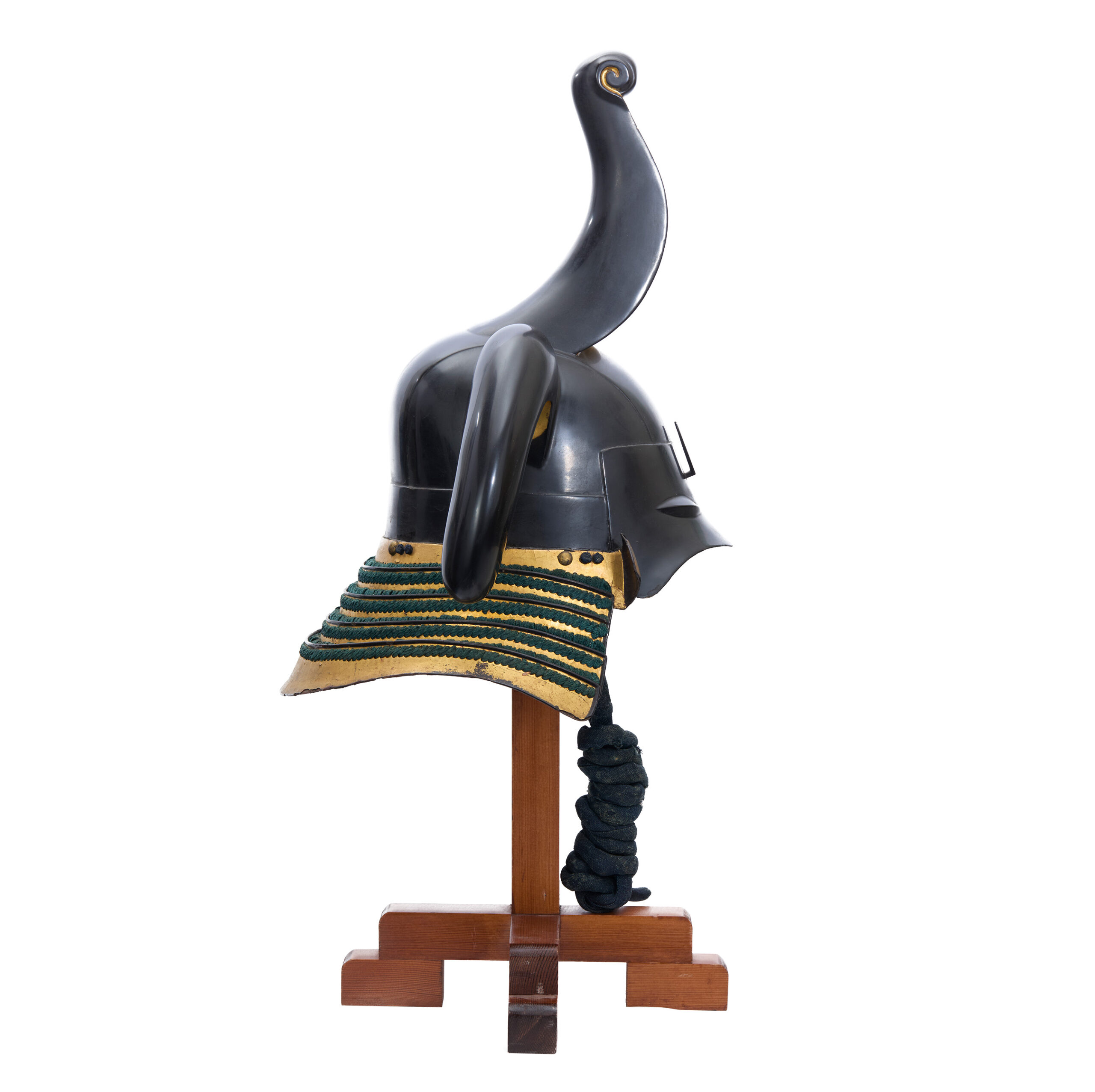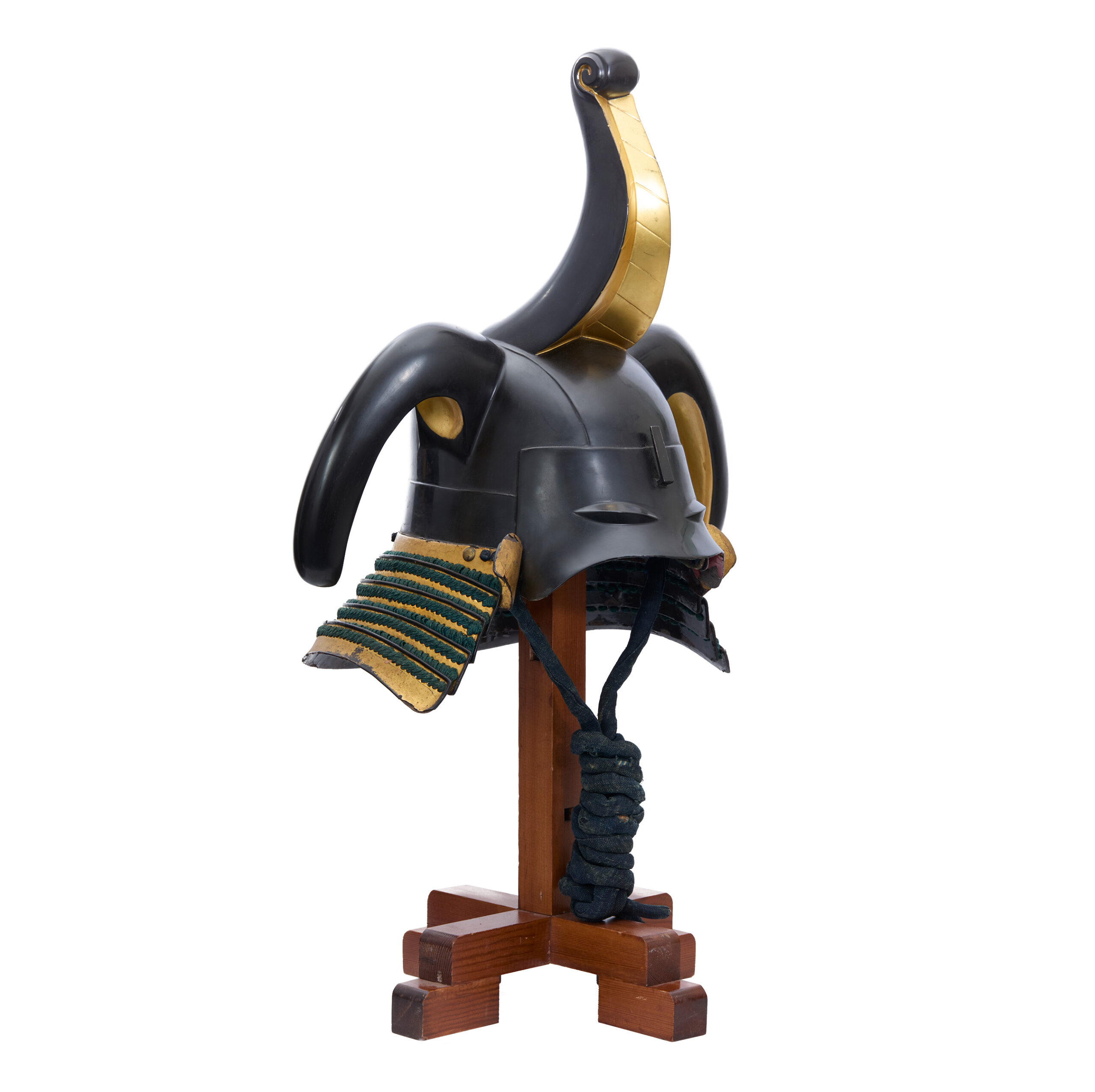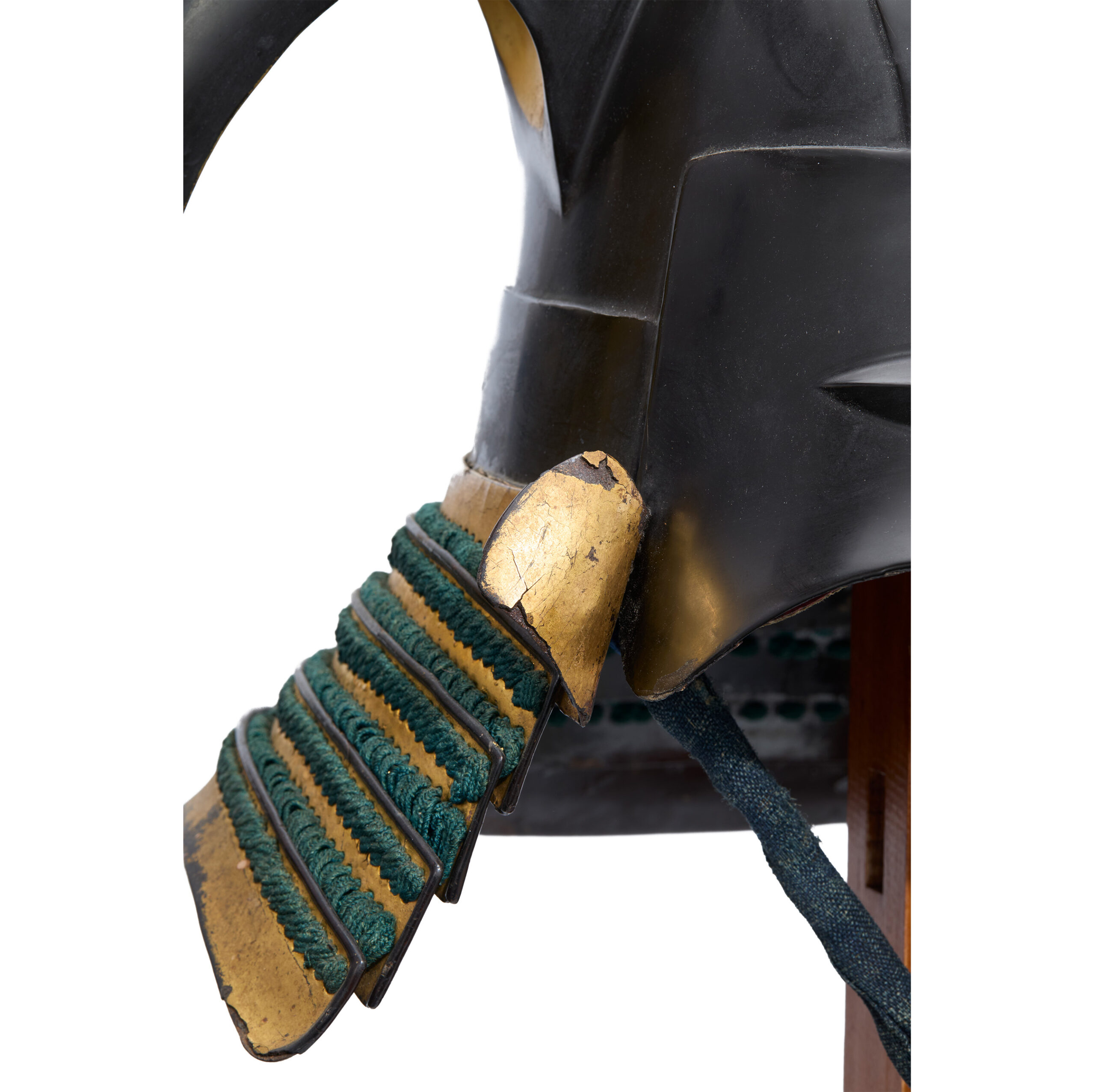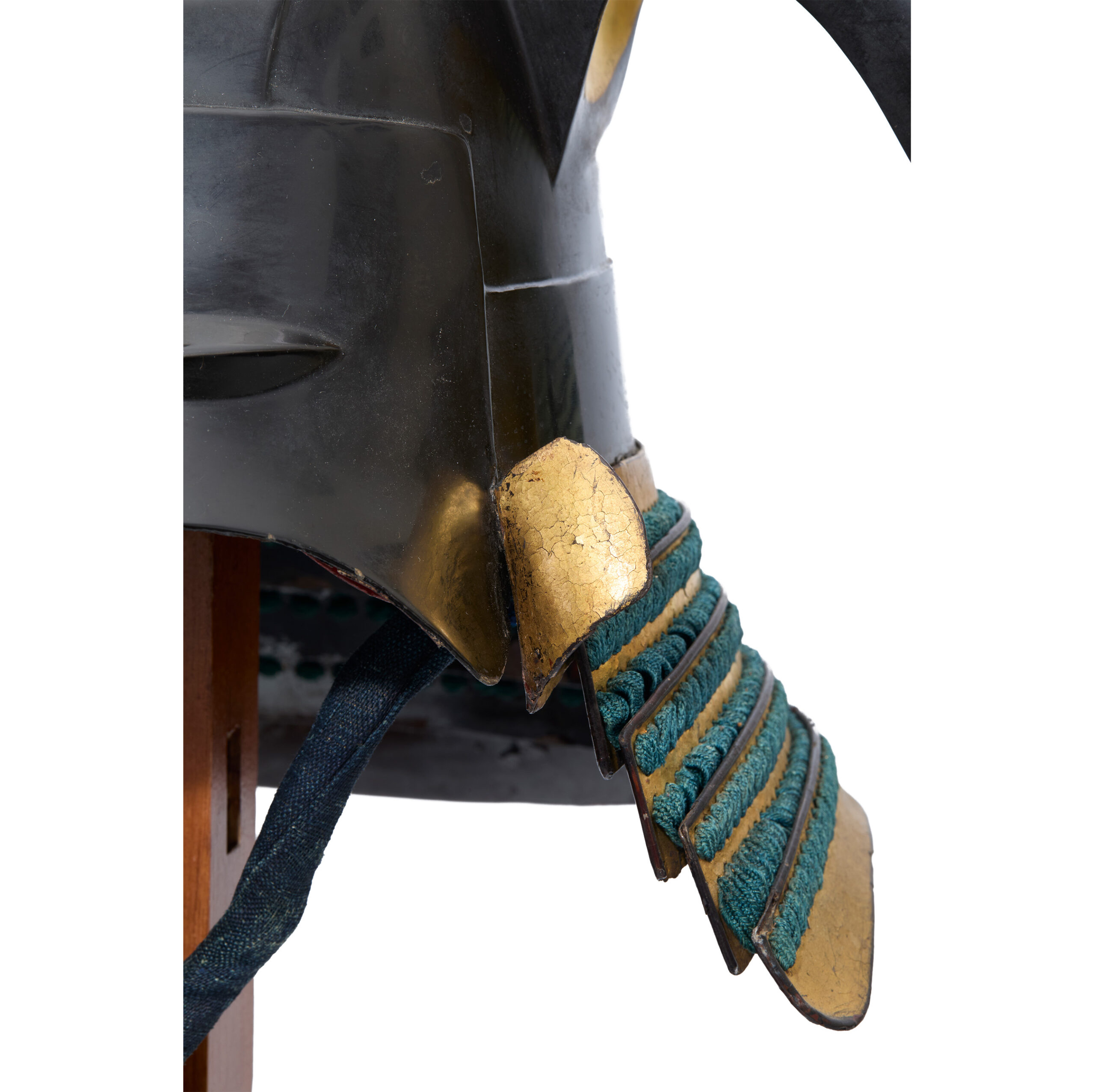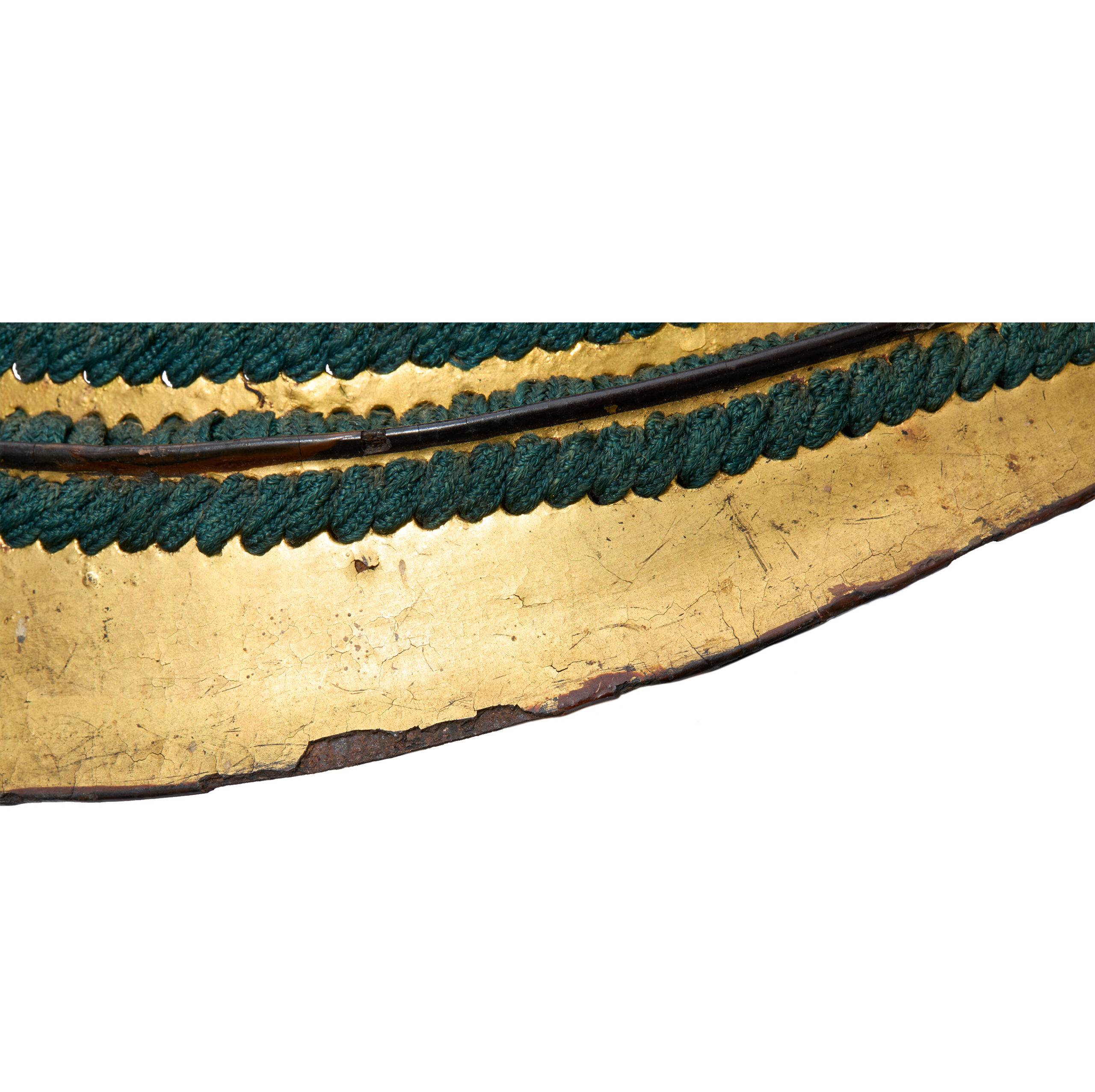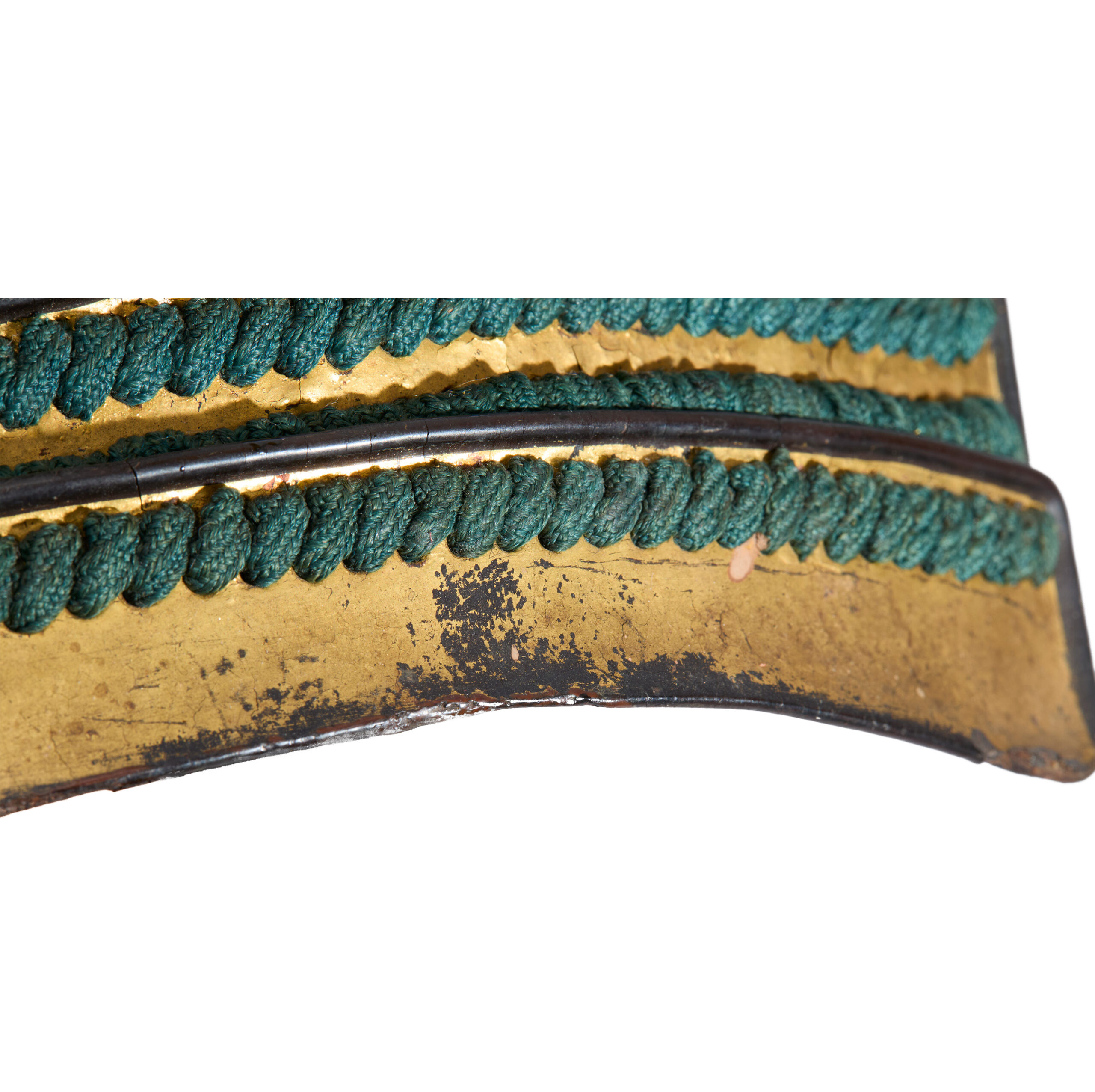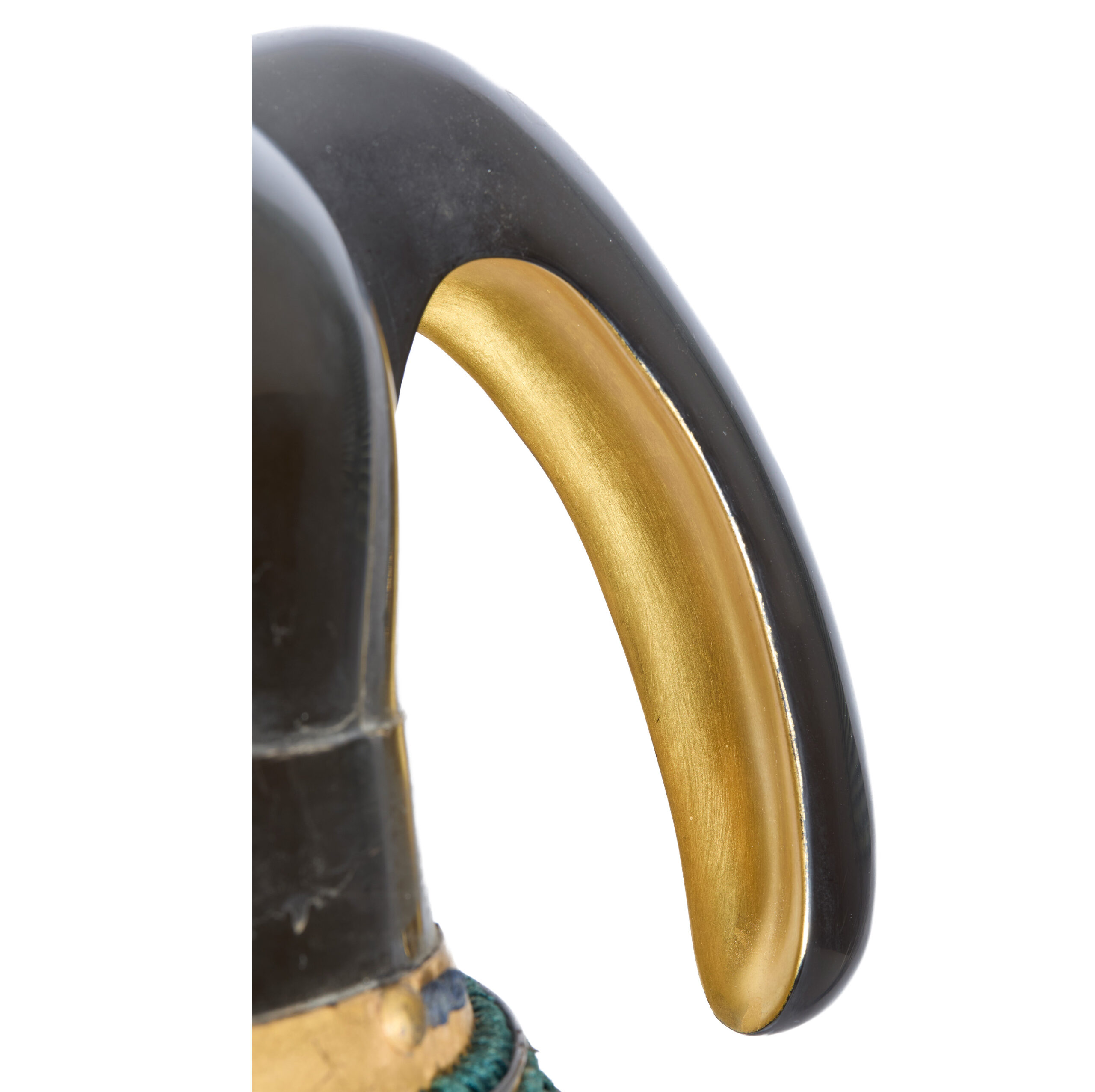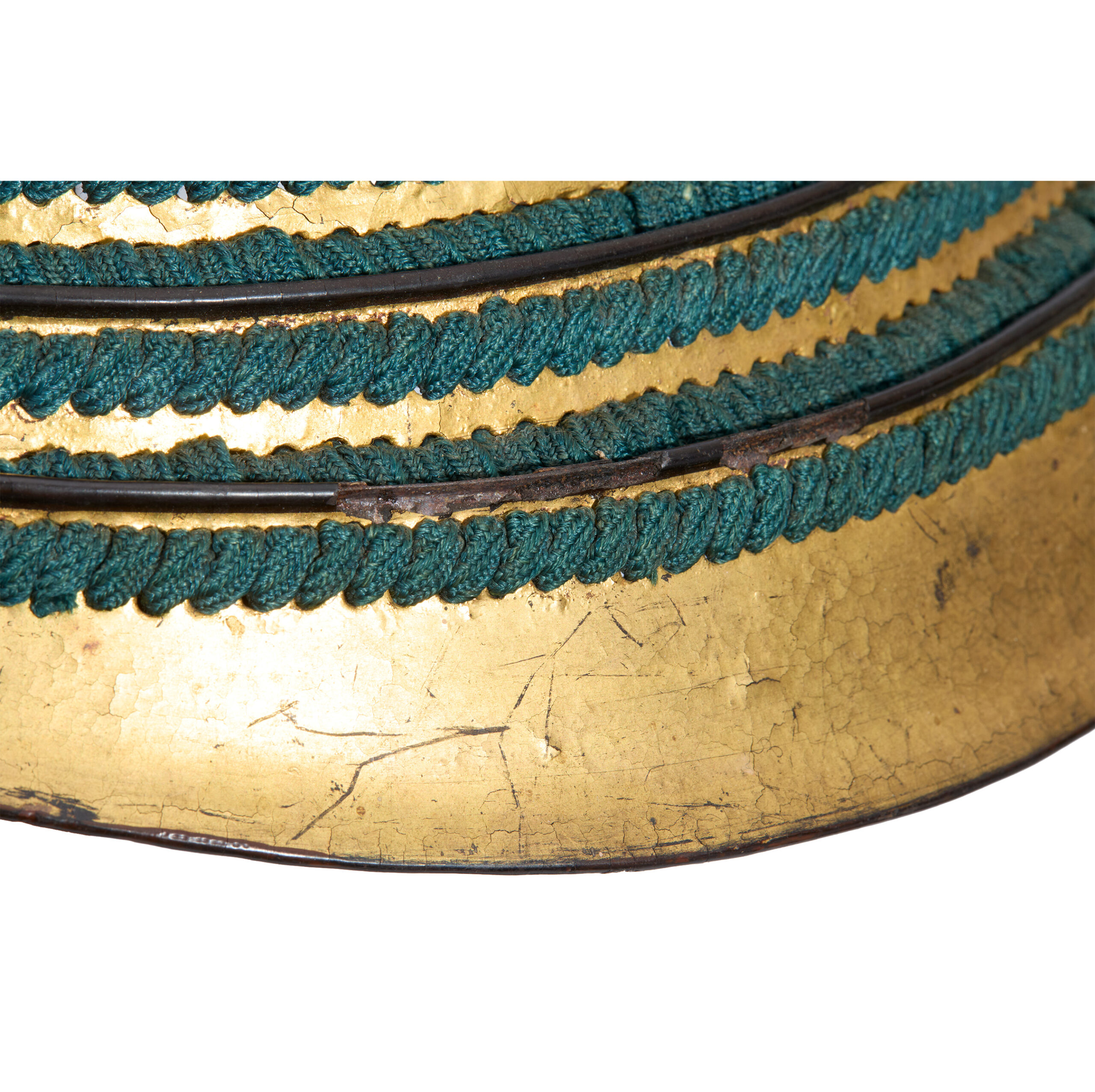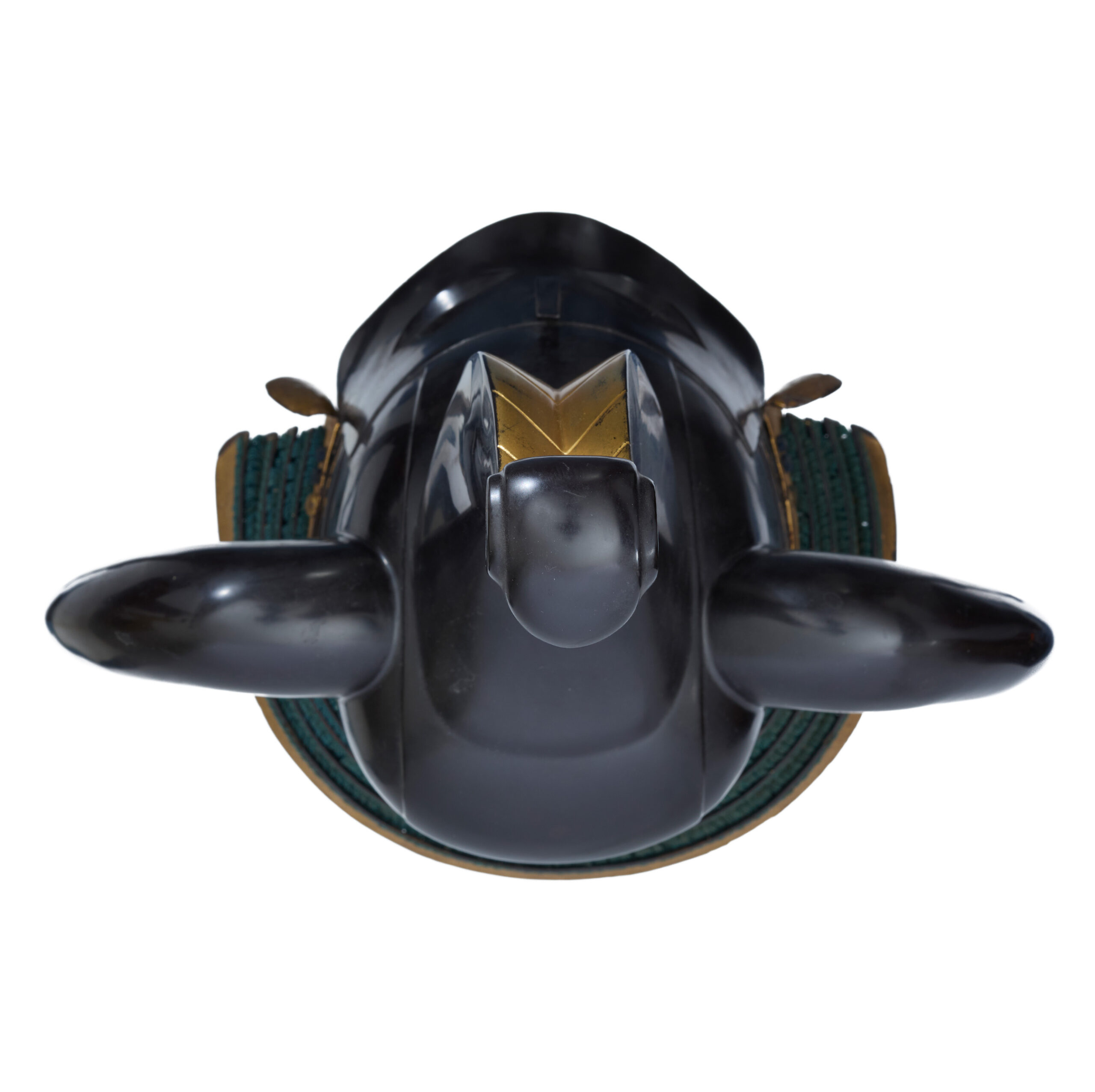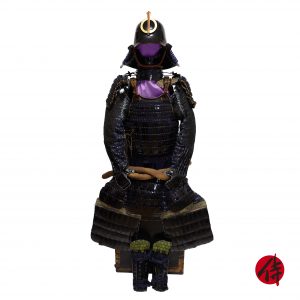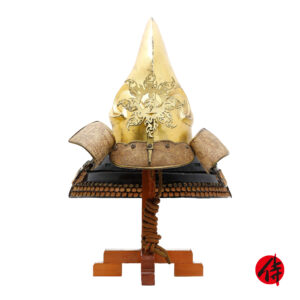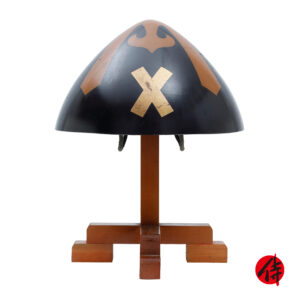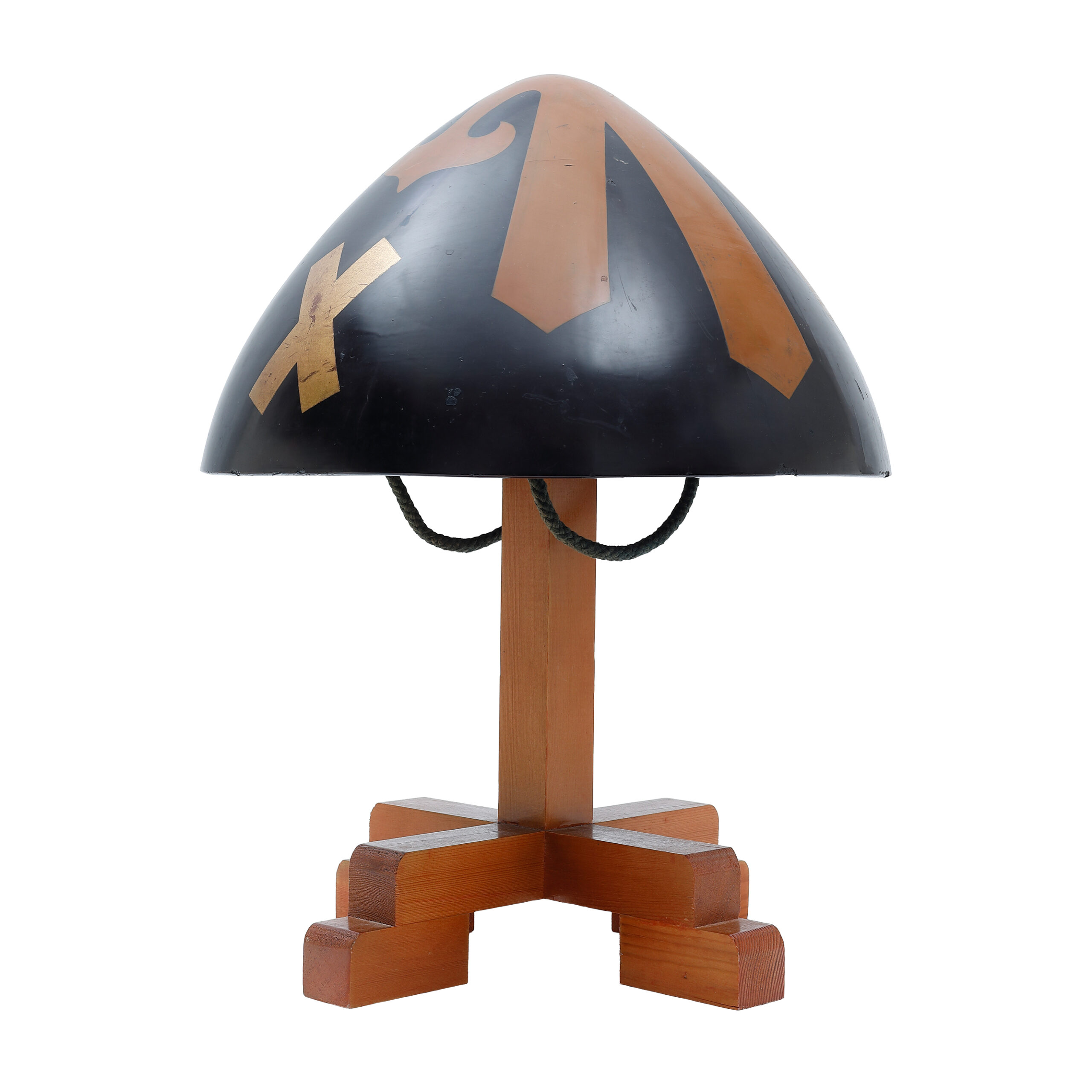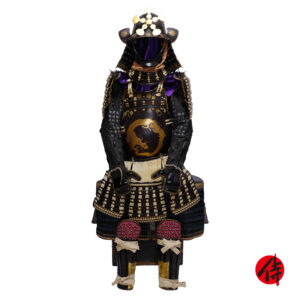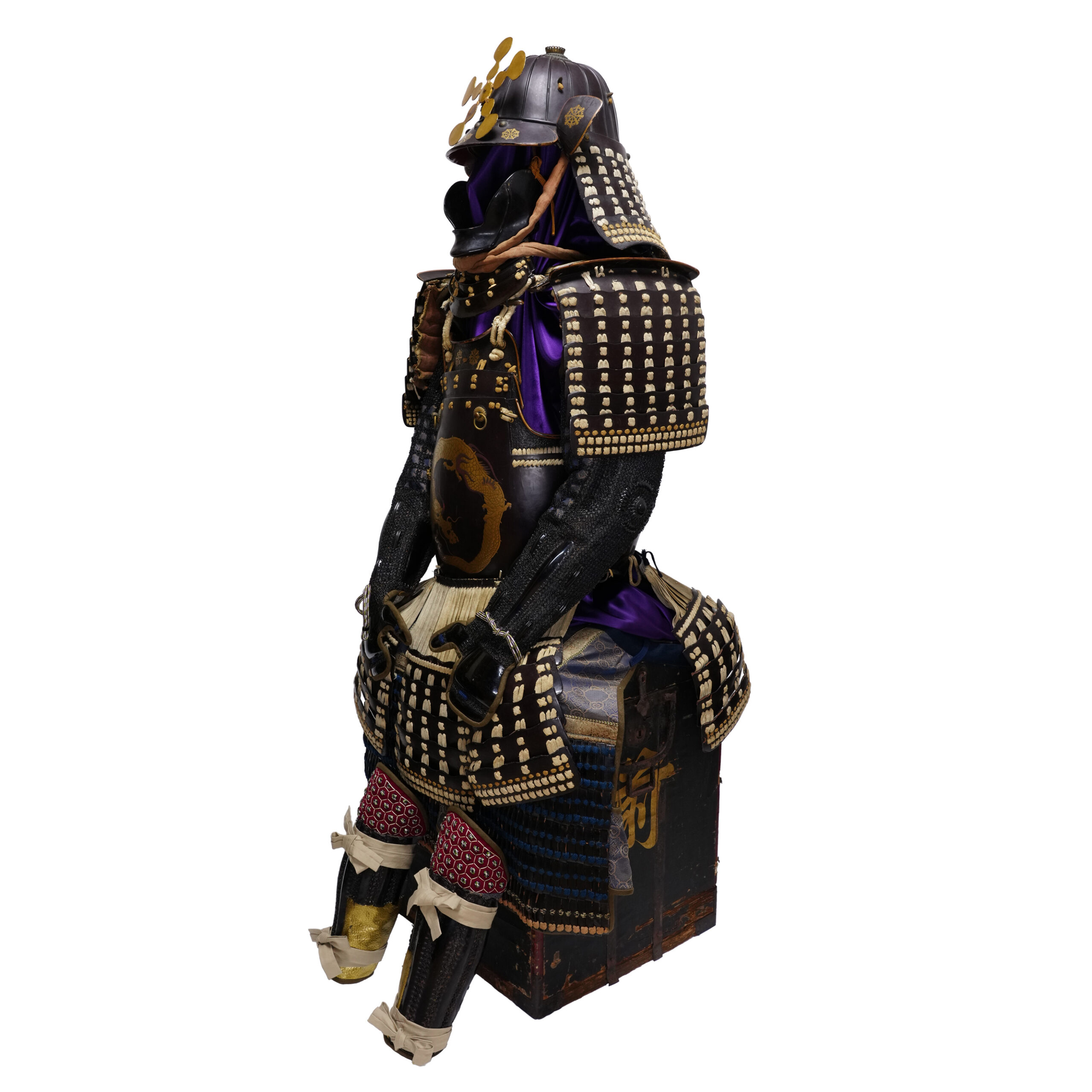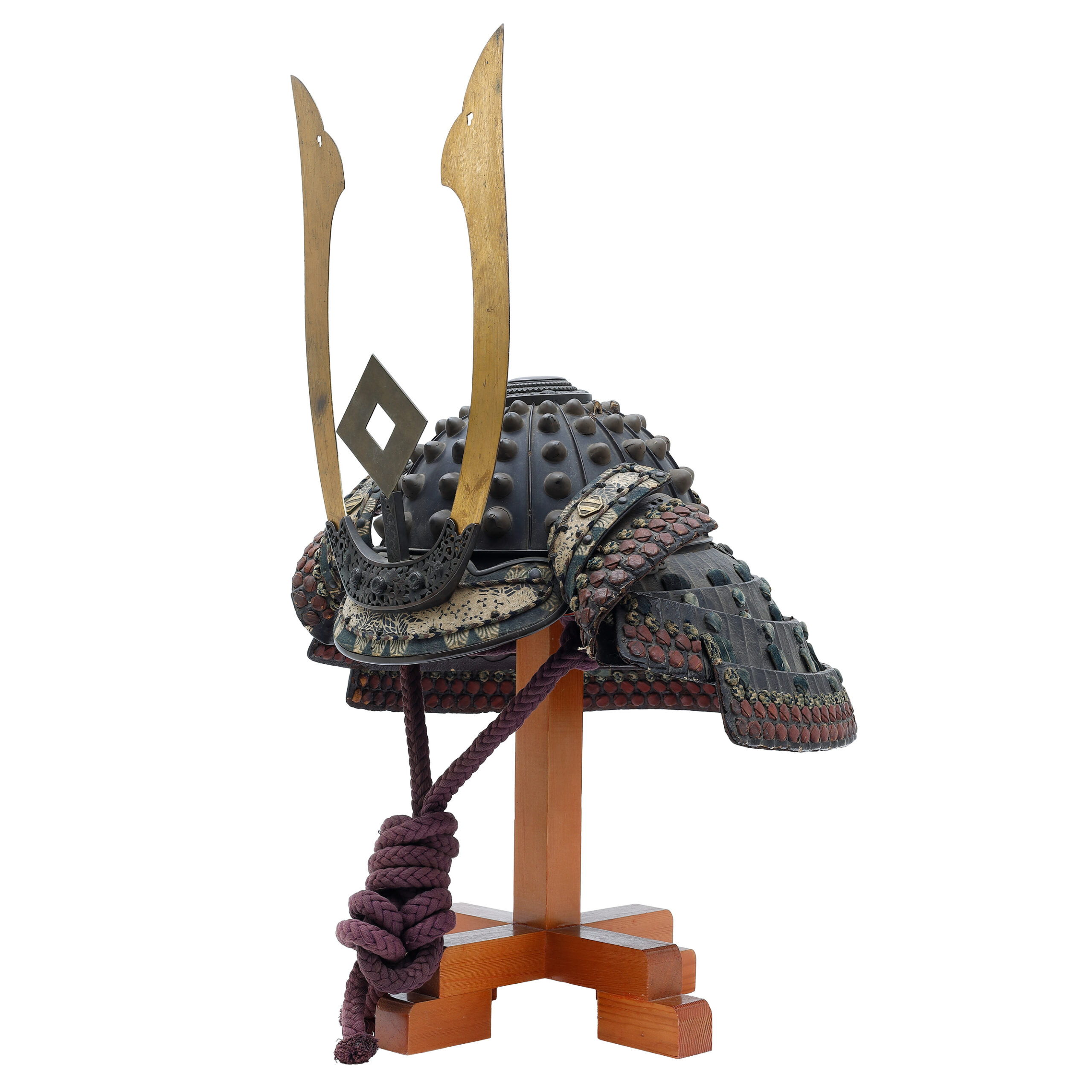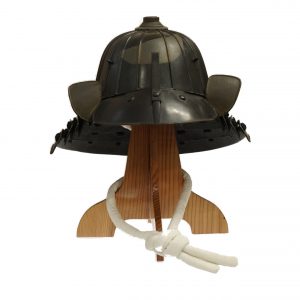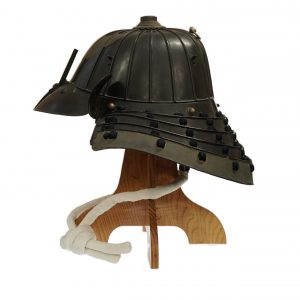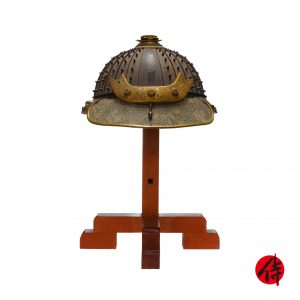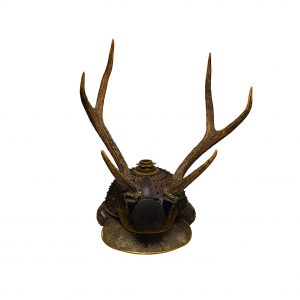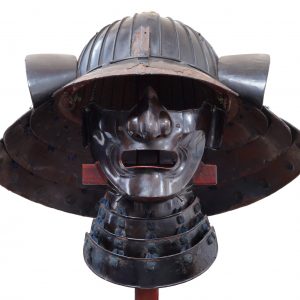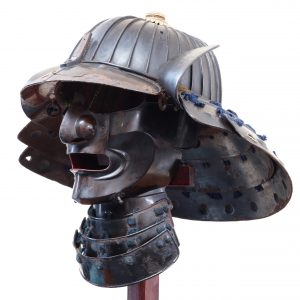Antique Samurai Mid Edo Period Helmet Kawari Kabuto with Tokubetsu Kicho Shiryo Certificate
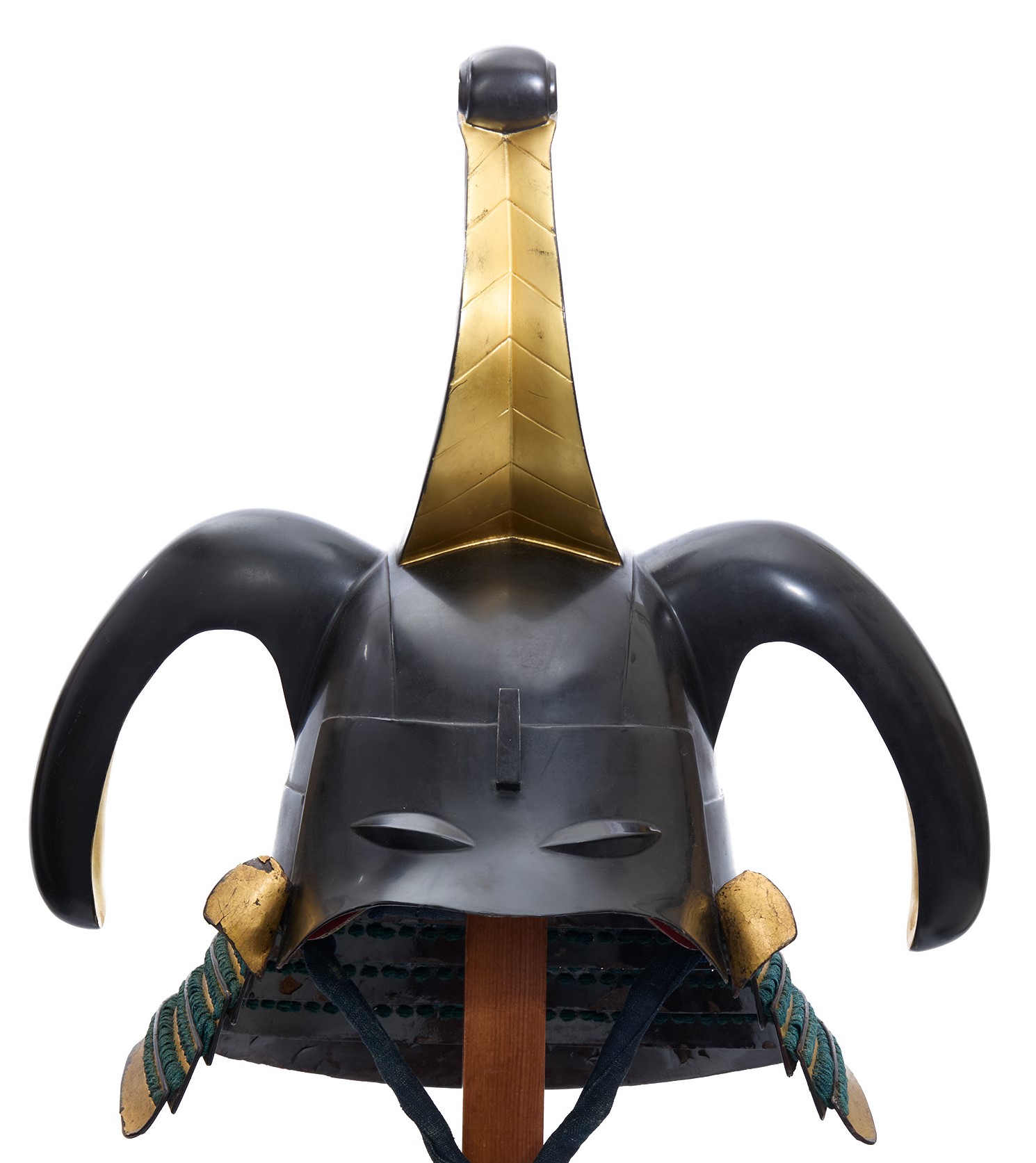
Period: Mid Edo Period (1688-1800)
appraised by The Association for the Research and Preservation of Japanese Helmets and Armor
Prime Material: Iron
*The certificate mentions that the Harigake part (the elephant decoration part) was added after the Meji era while the main part of the helmet was made during the mid Edo period.
According to the certificate, the name of this Kabuto is “鉄黒漆塗象鼻形変り兜 (Iron Black Lacquered Elephant-Trunk Shaped Kabuto),” and as the name suggests, its motif is an elephant.
Two elephants were brought to Japan from the continent in the Edo period, the 13th year of the Kyouho (享保) era (1728). They were gifts for the Tokugawa Shogun at that time, Tokugawa Yoshimune (徳川 吉宗, 1684-1751). Many ordinary people saw this animal during the journey from the elephant’s arrival to Edo city. And this giant animal became a trend among people. Initially, the Hakuzou (白象, white elephant) was sacred in Buddhism. It is known as a vehicle of the Fugen Bosatsu (普賢菩薩, Samantabhadra, a bodhisattva of rationale and mercy). A theory says Mayabunin (摩耶夫人, Mahāmāyā), who is the Buddha’s birth mother, saw a white elephant when she got pregnant Buddha. Also, the elephant has been regarded as a patient animal. Based on this history and religious idea, it is understandable that the elephant motif was incorporated into motifs for various items, as seen in this work.
The Kabuto (兜, helmet) is a protector for the head. When people started using the Kabuto, it was initially designed for practical use. However, the principal purpose of its design has changed with time; Samurais tried to express their dignity, personality, or religion by wearing the characteristic design Kabutos. According to a theory, these unique designed Kabutos were made from the late Muromachi period to the Edo period. This type of Kabuto is categorized as the Kawari Kabuto (変わり兜), and a variety of materials were used to create them. For example, animal fur, seashells, plants, and papers were used as materials for decoration.
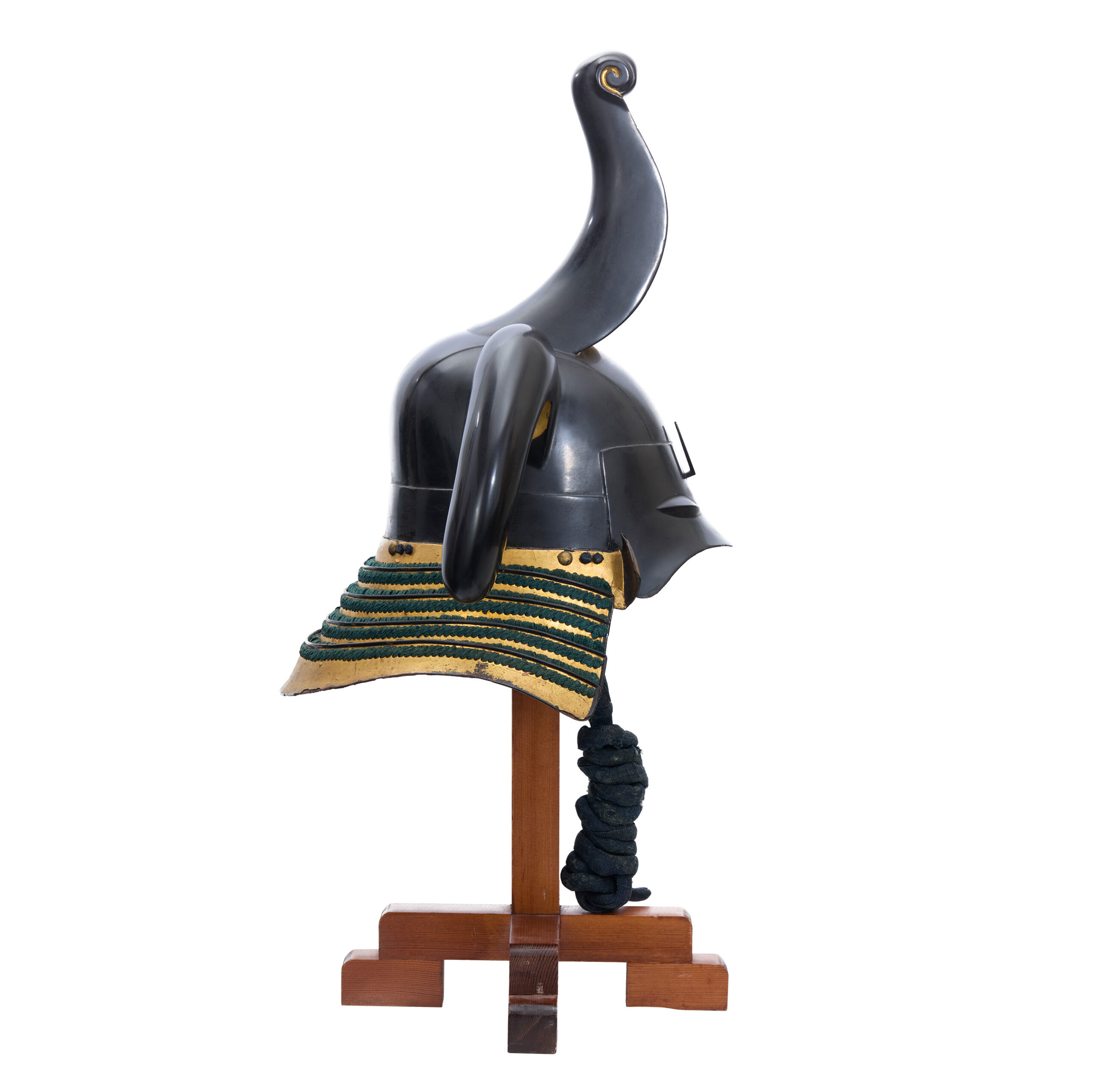
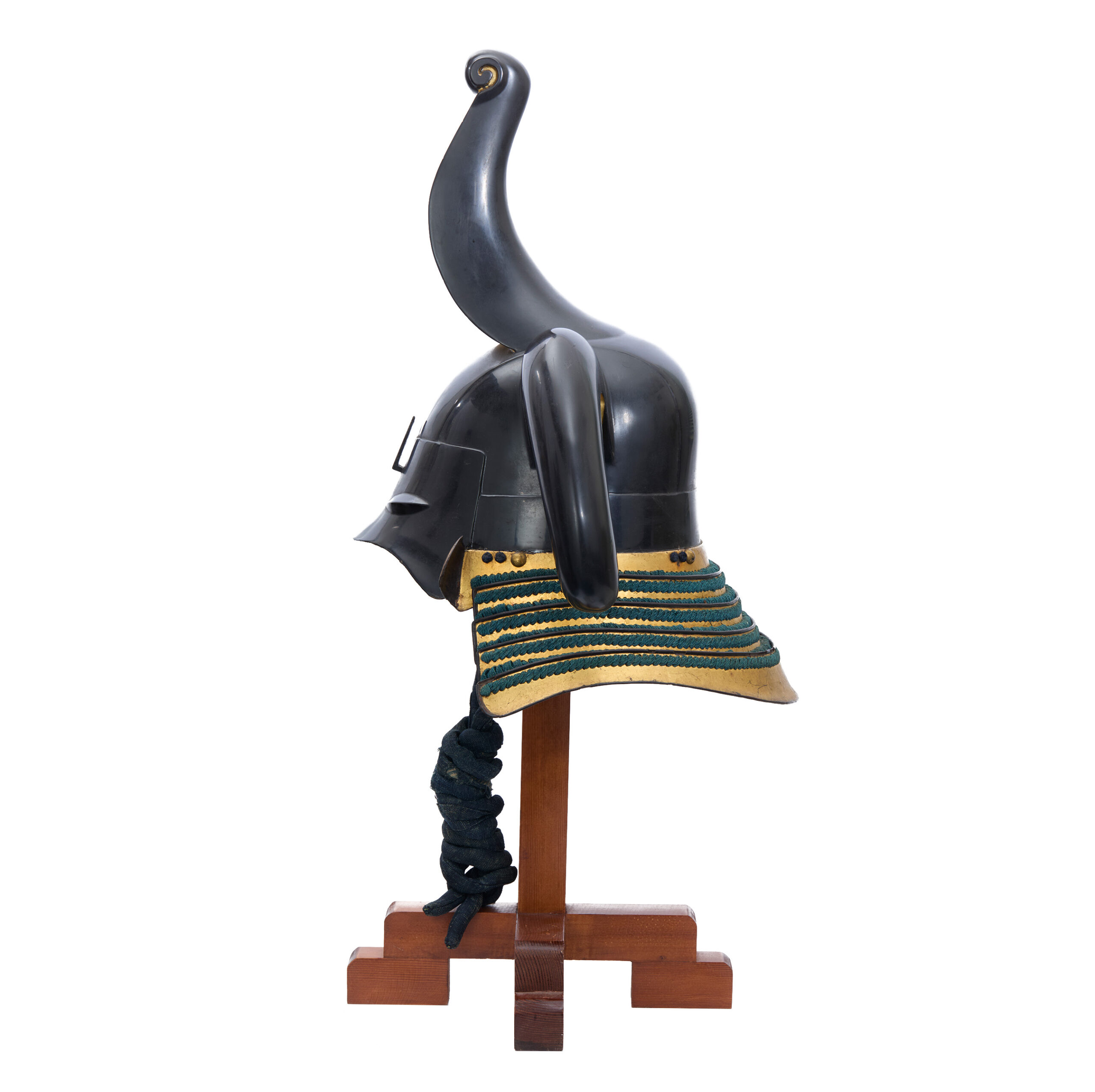
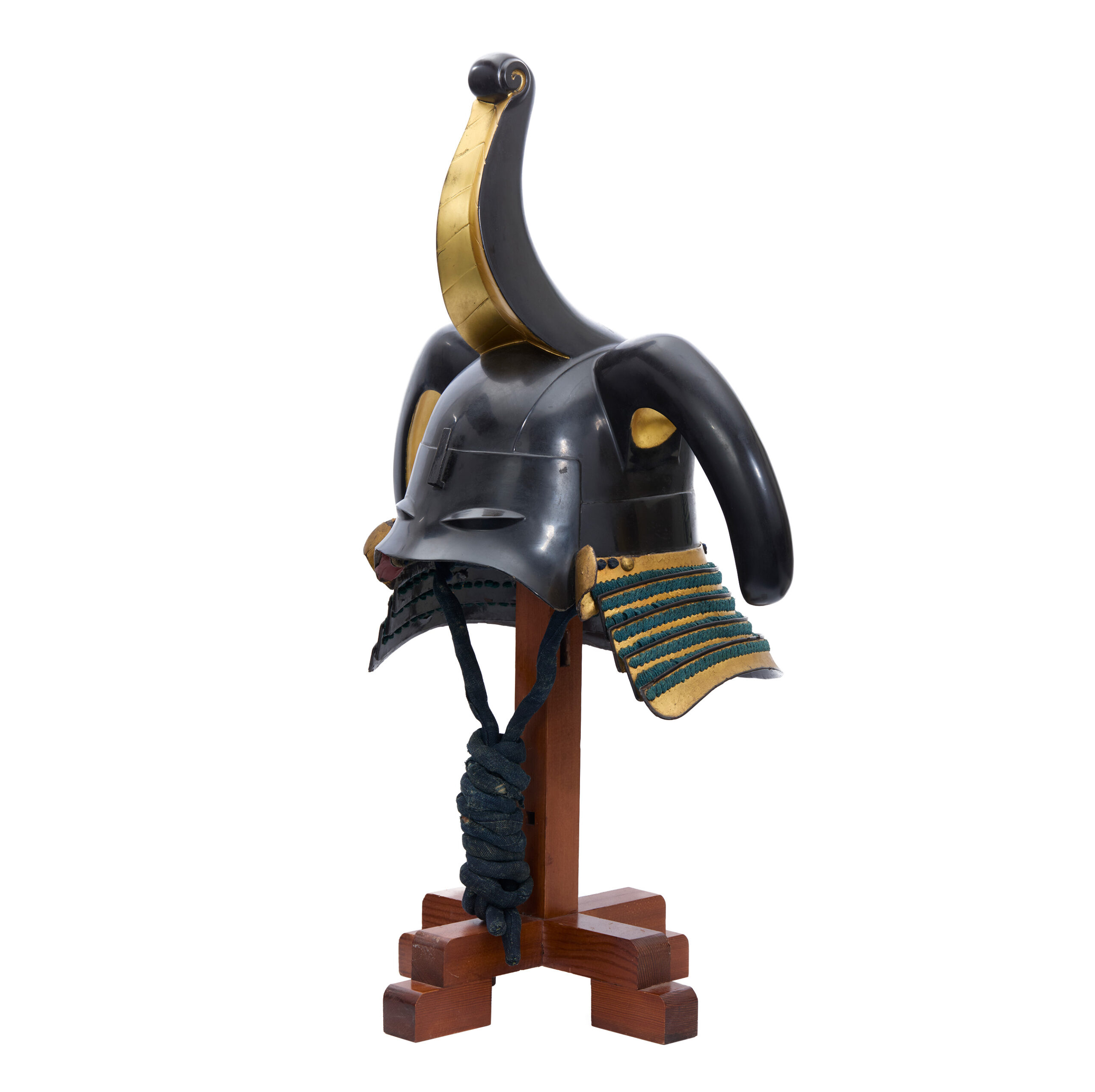
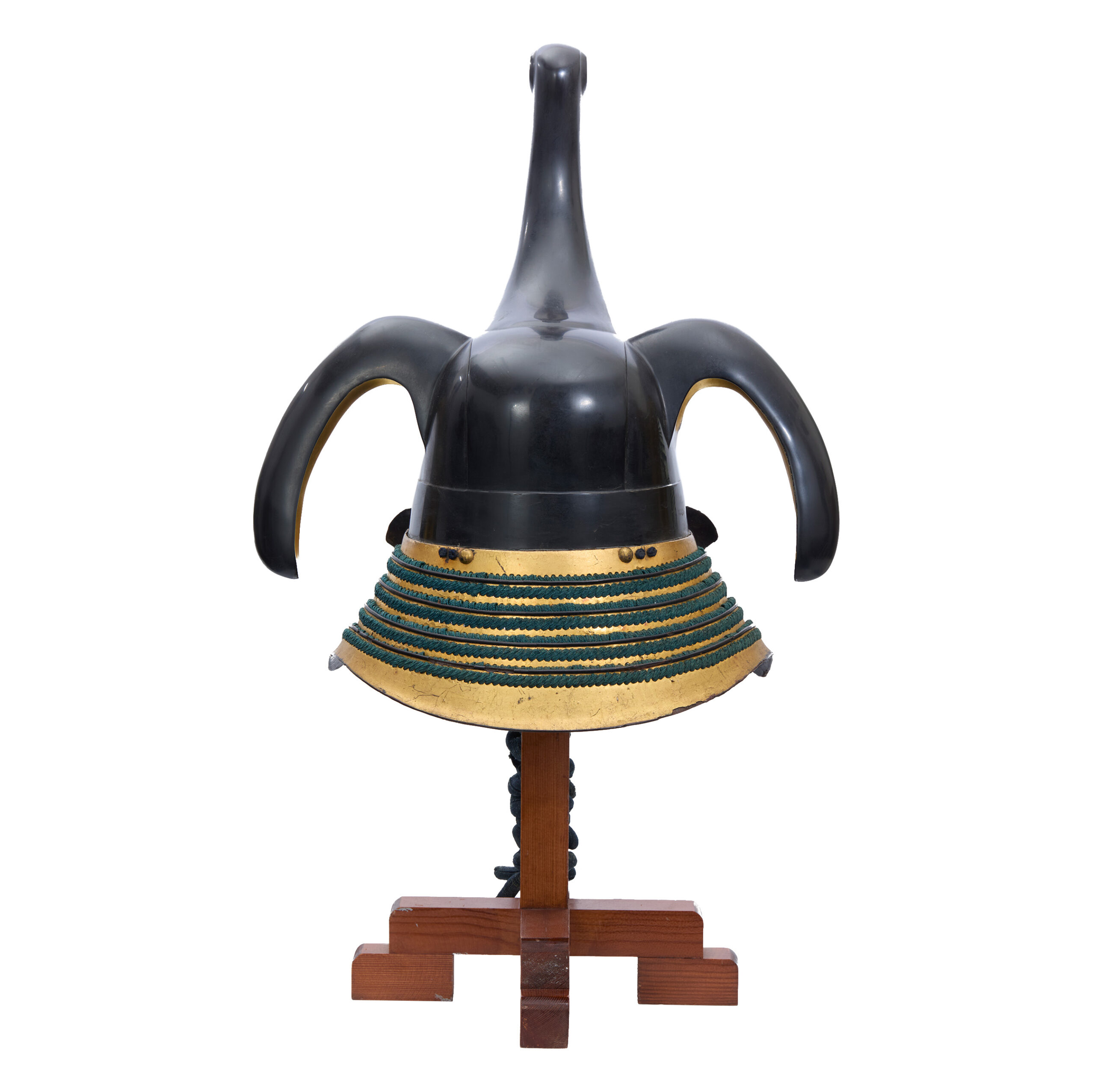
The Fukikaeshi (吹き返し), both ends of a Kabuto, is attached to this Kabuto. It protects the face from swords and also shows its beautiful workmanship. Family crests are sometimes designed on this part, as seen on this Kabuto.
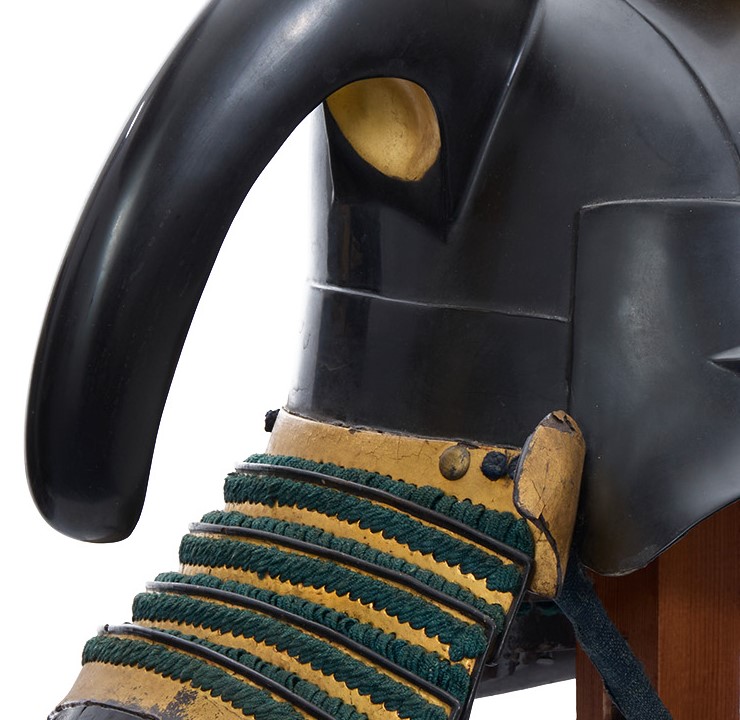
Certification: Tokugetsu Kicho Shiryo Certificate (No.2193)
The certificate was issued by The Association for the Research and Preservation of Japanese Helmets and Armor, which is the most trusted Japanese armor appraiser in Japan. Tokubetsu Kicho Shiryo means special rare article. It is ranked as the third highest of five rankings. This helmet was authenticated on May 28th, 2025, as a Tokubetsu Kicho Shiryo, and this paper mentions that this item was made in the mid Edo period.
*The certificate mentions that the Harigake part (the elephant decoration part) was added after the Meji era while the main part of the helmet was made during the mid Edo period.
An English translation of the certificate is available on request. We won’t charge any additional fee.
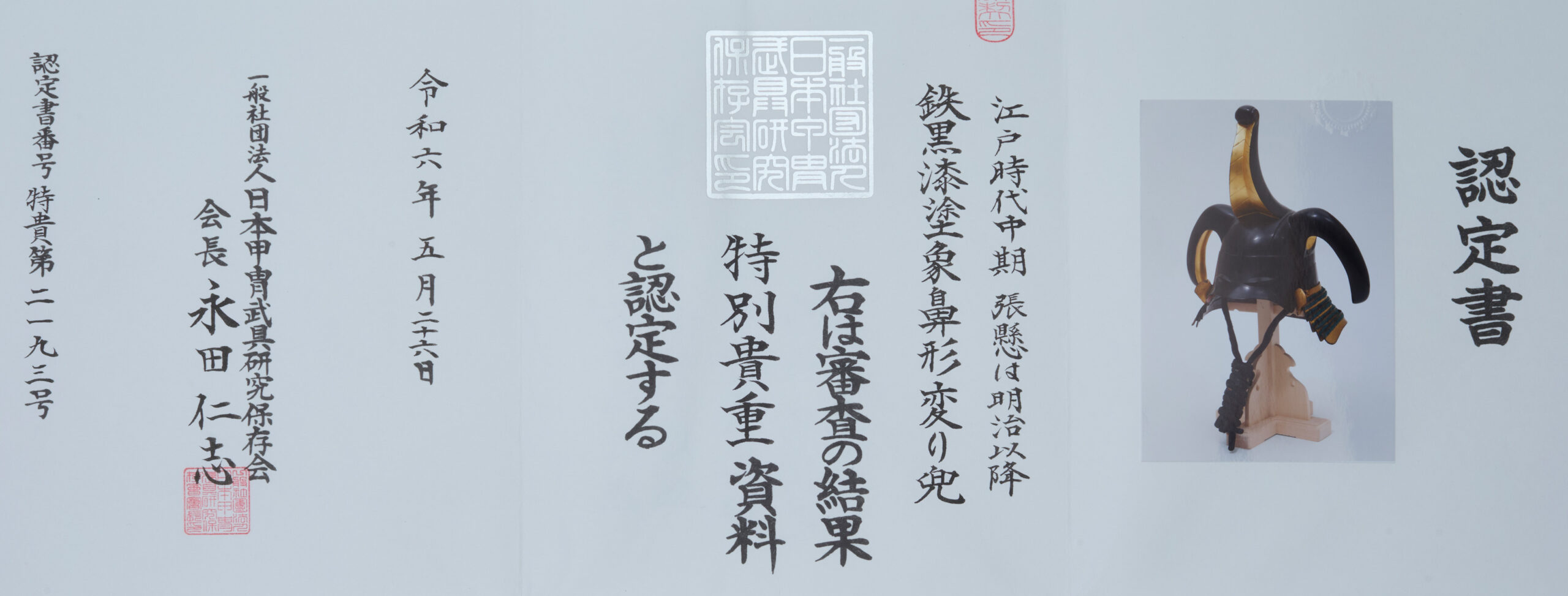
【About us】
Samurai Museum is located in Tokyo, Japan, exhibiting antique artifacts related to the Samurai history. Samurai Museum Shop is the place for those who are interested in Japanese culture and craftsmanship. We deal with antique Samurai swords/armor, traditional crafts made in Japan and so on.
【Antique Japanese helmet (Kabuto) and Export process】
After receiving the full payment from you, we will apply for its export permit from the Board of Education to legally export the helmet to other countries. It normally takes around 2-4 weeks to receive this permit. And we would like you to expect at least 1.0-1.5 months for your order to arrive at your given address after you ordered.
【Payment Method】
We accept payment through Stripe (Credit card), PayPal, Apple Pay or ChromePay, all of which are secure payment methods. Also, you don’t need to make an account on Stripe for the checkout. If you prefer other payment method, please contact us. After confirming your payment, we will apply for an export permit. You may either pay in JPY, USD, AUD, CAD, EUR, CHF or GBP. The price is set in Japanese Yen. Prices in other currencies are automatically calculated based on the latest exchange rate.

【Shipping Duration】
We normally ship via EMS (Express Mail Service) provided by Japan Post. It usually takes at least 5-14 days to deliver the package after you place an order.
We offer Free International Shipping as long as we can ship your order by EMS. If you prefer other shipping carriers, please contact us.
We will inform you of the order’s tracking number via email. Please make sure you fill out your valid email address correctly.
*If you like to make sure if EMS shipping is available to your country, please contact us.

【How to make sure the condition】
Please keep in mind that what you are going to purchase is an antique item. We uploaded high resolution photos for you to check its condition thoroughly. If you like to see more photos with different angles, please feel free to contact us. We will be happy to send them to you so that you can make informed decision. It is essential for us to know that you are happy with your choice of a sword. and we are prepared to use the best of our ability to serve you.
【How To Contact Us】
Please contact us through email, Facebook Messenger or Live Chat if you have any questions. You can find each icon on the right side of the website. Please click one of them to reach us. We will reply to you within 1-2 business days.
【How To Preserve Antique Samurai Armor/Helmets】
Dryness, humidity, and bad ventilation might deteriorate the condition of antique Samurai armor/helmet. The best temperature to preserve Samurai armor/helmet is around 20℃ in Celsius, and humidity should be about 60%. Direct sunlight should be avoided. We recommend storing armors/helmets in a room with good ventilation. If you like to display them outside the boxes for a prolonged time, we suggest using a glass case in order for dust not to be accumulated easily. In case you don’t use a glass case, please make sure to regularly dust off from the armor/helmets by using a soft brush made of delicate cloth or brush for painting.
If you like to know more about the preservation of this armor, please feel free to contact us.




